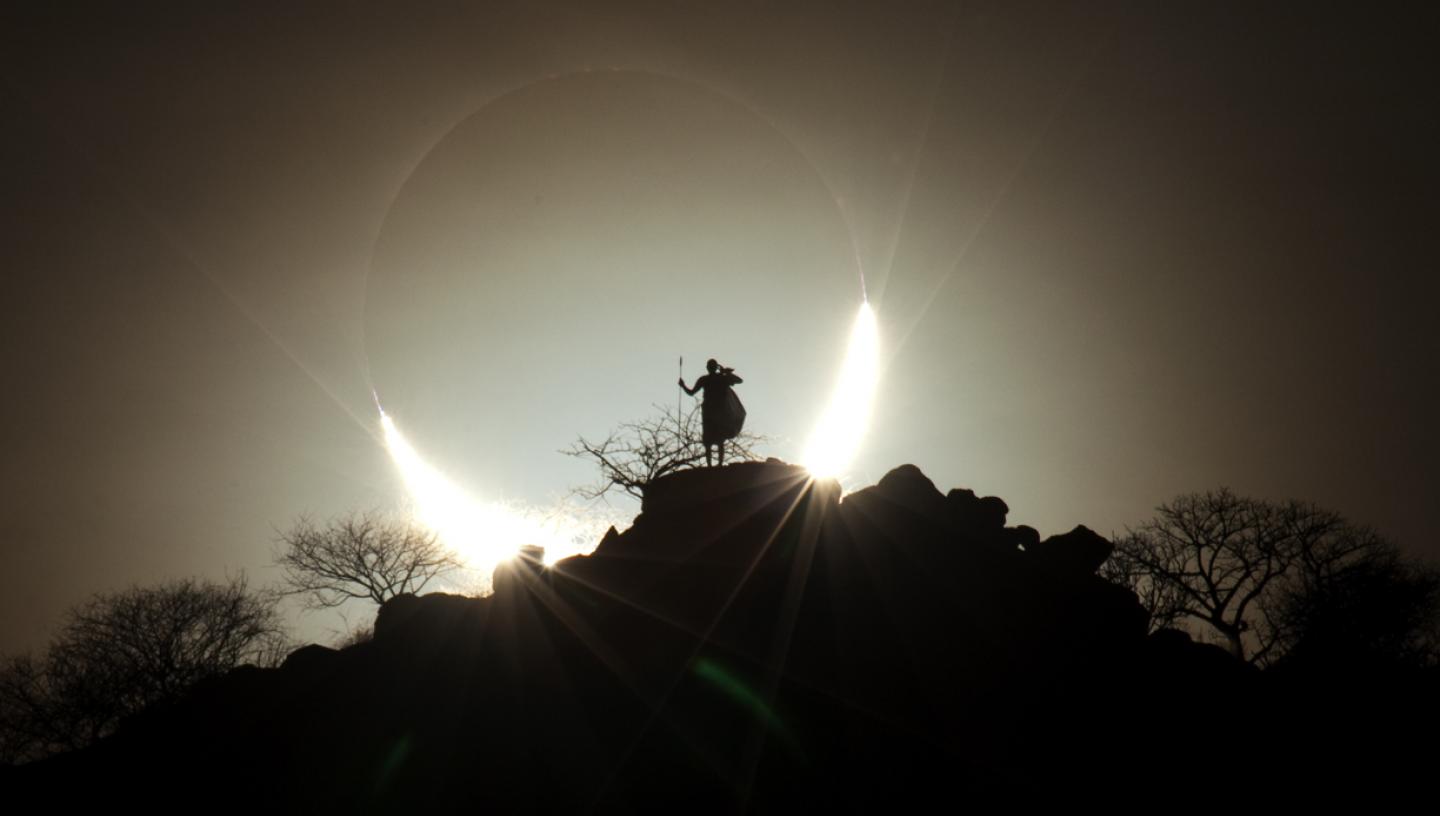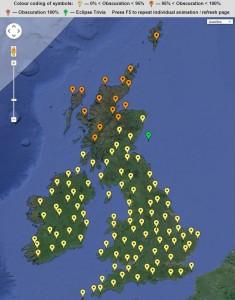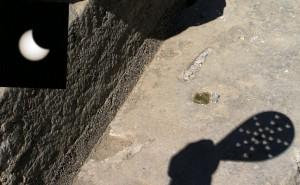
Essential Information
| Location |
Royal Observatory
|
|---|---|
16 Mar 2015
This coming Friday (20th of March, 2015) there will be a stunning partial solar eclipse visible across much the UK and Ireland. Solar eclipses are a fantastic chance to see the stunning alignment of our planet, our Moon and our star, the Sun. Usually the Moon would simply be in its new moon phase at this time of the month when all the Sun’s light is shining on its far side. However, when the Moon is in line with the Sun from our perspective it reveals its silhouette on the bright face of the Sun. Thanks to the Moon being 400 times smaller than the Sun and 400 times closer to us; they match each other very well in size in the sky as seen from Earth. From our position in London 85% of the disc of the Sun will be obscured with the remaining portion appearing as a Cheshire cat smile in the sky. To see 100% of the Sun covered – a total solar eclipse - you have to go much further north to either the Faroe Islands or Svalbard Islands. Visitors there will be in the deepest shadow of the Moon and witness what we call totality. This is the ethereal moment where the only parts of the Sun visible are its outer atmosphere called the corona and any loops of plasma coming off the edge of the Sun called prominences.
When is it? From London the Moon will begin eclipsing the Sun at 08:24 and the time of greatest eclipse occurs at 09:30. The Moon will leave the face of the Sun entirely by 10:40. For other locations make sure to check out this excellent interactive map from Her Majesty’s National Almanac Office. You’ll be able to find times and coverage for your region and even see an animation of what the event will look like.

How can I view it safely? As always, with any observing event involving the Sun, it should never be looked at directly without the appropriate filters. If you want to look at the eclipse directly and safely there are two main options. The first is to check and see if your local astronomical society is hosting a solar eclipse event as they will have many instruments specifically for solar viewing or telescopes that have been fitted with the right filters. A good resource for checking out events in your local area can be found on the BBC Stargazing Live website Secondly, if you can’t get out to these events and still want to look at the eclipse directly you can purchase solar eclipse viewing glasses. These must be the real deal – not 3D glasses or anything similar. Some of these may be available in popular astronomy magazines. Finally the safest, cheapest and arguably the most convenient way to view the event is by pinhole projection. By making a hole in a piece of card and projecting the Sun onto a piece of paper you can view a small version of the event. This is extremely safe as there is no need to look directly at the Sun and the display can be shared by a few people together. Alternatively you could raid the kitchen drawers for all things holey – whether it’s a slotted spoon, colander or such like. This way you’ll see multiple projections of the event which makes for quite an artistic way to view this rare celestial event!

What if it the weather isn’t great? If the weather is not on your side on Friday there are a number of websites that will be streaming video of the event live from other locations. Try one of these to enjoy the event no matter the weather in your location: http://live.slooh.com/stadium/live/the-total-solar-eclipse-of-2015 http://www.virtualtelescope.eu/2015/02/18/20-march-2015-partial-solar-eclipse-live-event-online/
When will it happen next? The next partial eclipse visible from the UK will be ever so slightly better in terms of coverage at 91% obscuration, but it won’t be happening until the year 2026. The next total solar eclipse as seen from the UK won’t be until the year 2090! For further solar eclipse tips this week follow us on Twitter @ROGAstronomers.